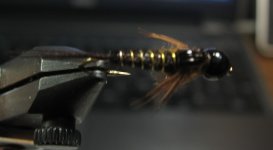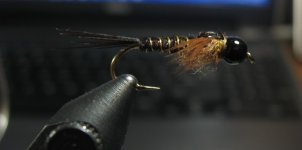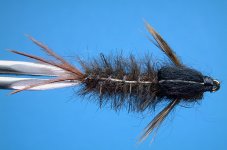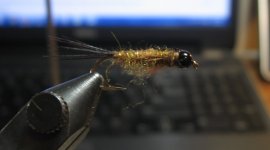RCFetter
Well-known member
This is the same ISO nymph I posted before in the what are you tying today thread. I got it from this tightline video:
Isonychia Nymph
It's basically a PT Nymph but with very dark pheasant tail body and a thorax of reddish brown dubbing (there's another variation where both the body and thorax are red/brown dubbing).
This time I added legs using Indian Hen Back.
Should I fluff out the dubbing any more or less if it already has hen back legs?
Any other comments/critiques will be appreciated.
Isonychia Nymph
It's basically a PT Nymph but with very dark pheasant tail body and a thorax of reddish brown dubbing (there's another variation where both the body and thorax are red/brown dubbing).
This time I added legs using Indian Hen Back.
Should I fluff out the dubbing any more or less if it already has hen back legs?
Any other comments/critiques will be appreciated.










